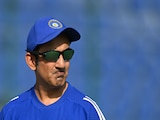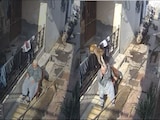US space agency NASA has created an immersive visualisation on its supercomputer that gives us a sneak peek into the heart of a black hole. With this simulation, viewers can plunge into the event horizon, the boundary beyond which nothing, not even light, can pass.
Astrophysicist Jeremy Schnittman from NASA's Goddard Space Flight Centre led the project in collaboration with scientist Brian Powell. The project uses the 'Discover supercomputer' and generates vast amounts of data. The destination is a supermassive black hole, similar to the one at the centre of our Milky Way galaxy, with a mass millions of 4.3 million times more than that of our Sun.
What do you see when you enter a black hole?
Approaching the black hole from 400 million miles away, viewers see dramatic distortions in space-time. The surrounding accretion disk -- a swirling mass of hot gas -- and background stars appear significantly warped, like looking at a funhouse mirror.
As the camera gets closer, the light from stars and the swirling disk of gas around the black hole looks brighter and brighter, like the roar of a race car getting louder as it speeds by.
It takes about 3 hours for the camera to get to the event horizon, but to someone watching from far away, it seems like the camera never quite reaches it. The closer it gets, the slower it appears to move until it looks like it has stopped altogether.
In the simulation, there are two possible outcomes for NASA's camera. In one scenario, it narrowly misses the event horizon, while in the other, it crosses over this boundary. If the camera crosses this line, it goes through a dramatic process called "spaghettification",
However, in an alternative scenario where the camera orbits close to the event horizon but does not cross it, time will start acting strangely. It will stretch or dilate. For the astronaut on the camera, time ticks away as usual. But for those watching from far away, time appears to slow down. This time-dilation effect means that when the astronaut returns, they will actually be younger than their colleagues who stayed far from the black hole.















